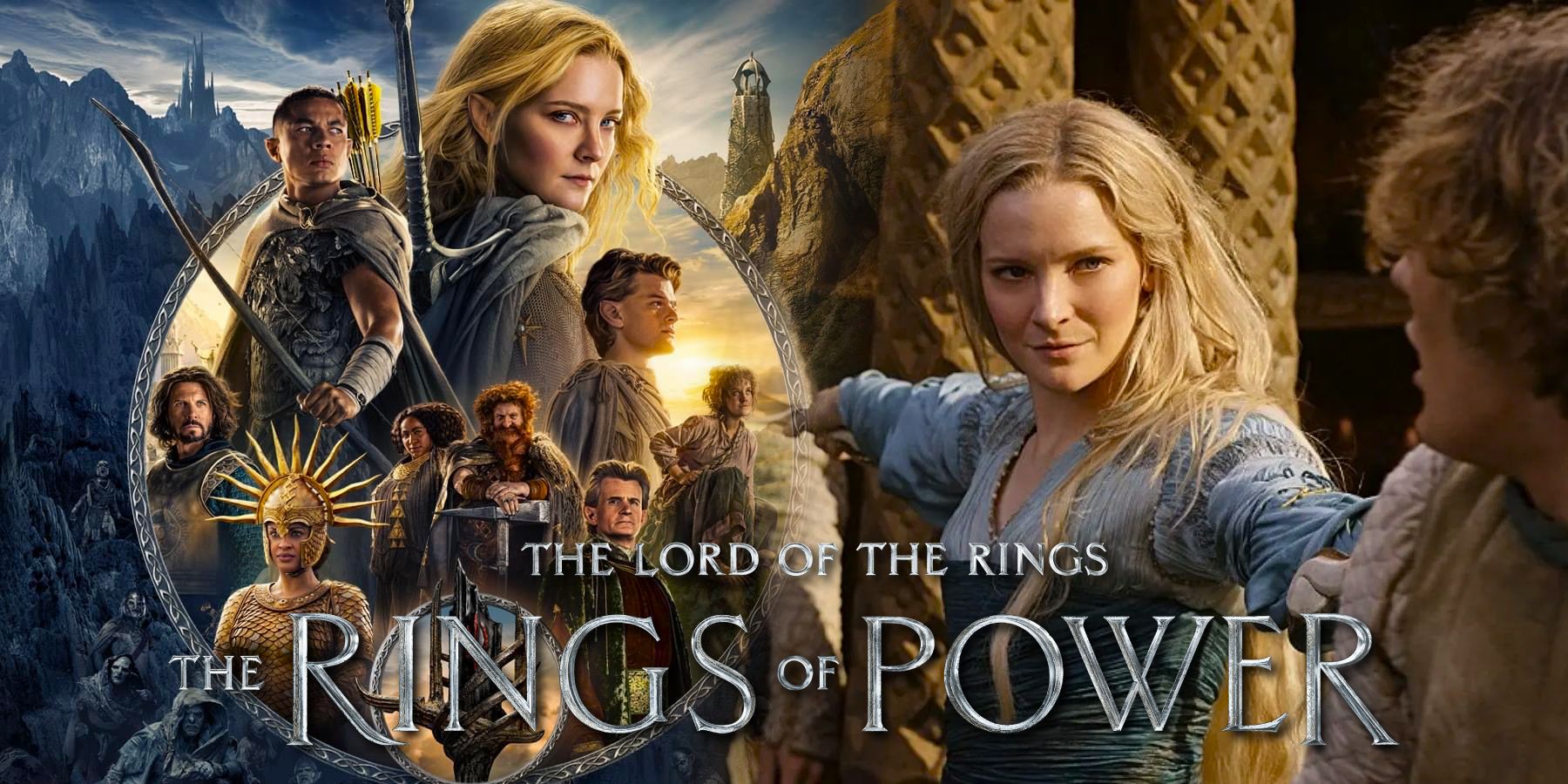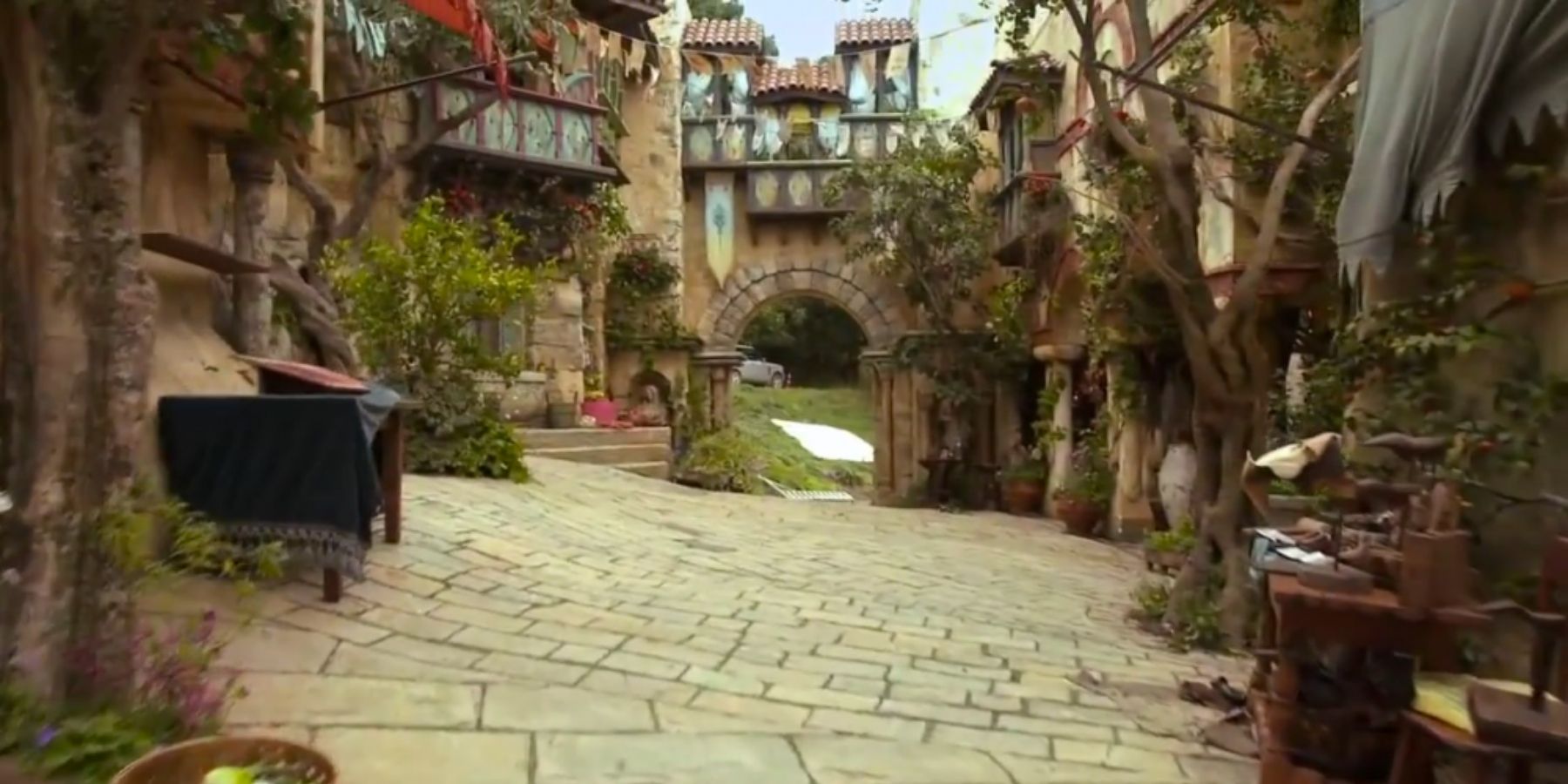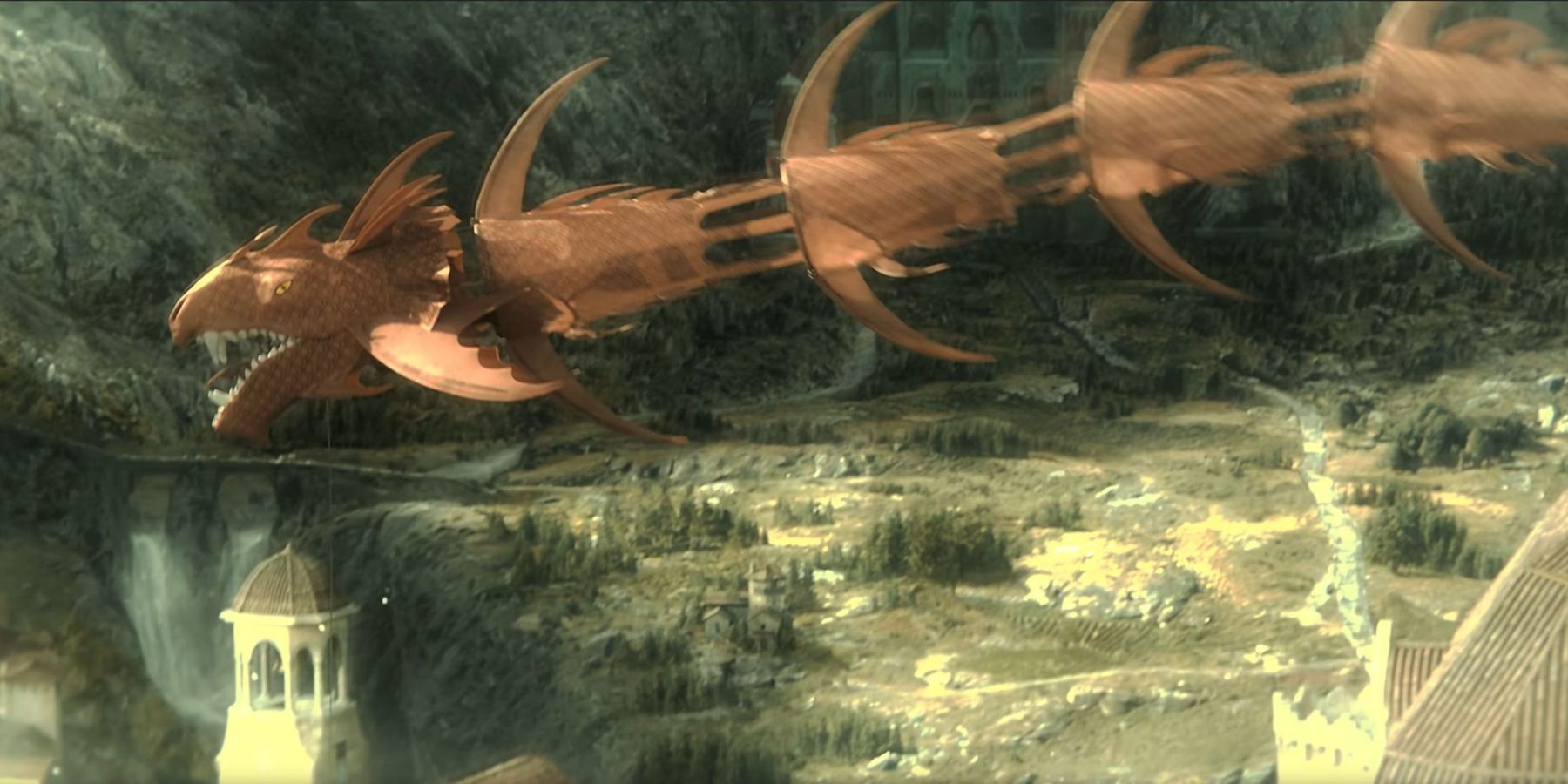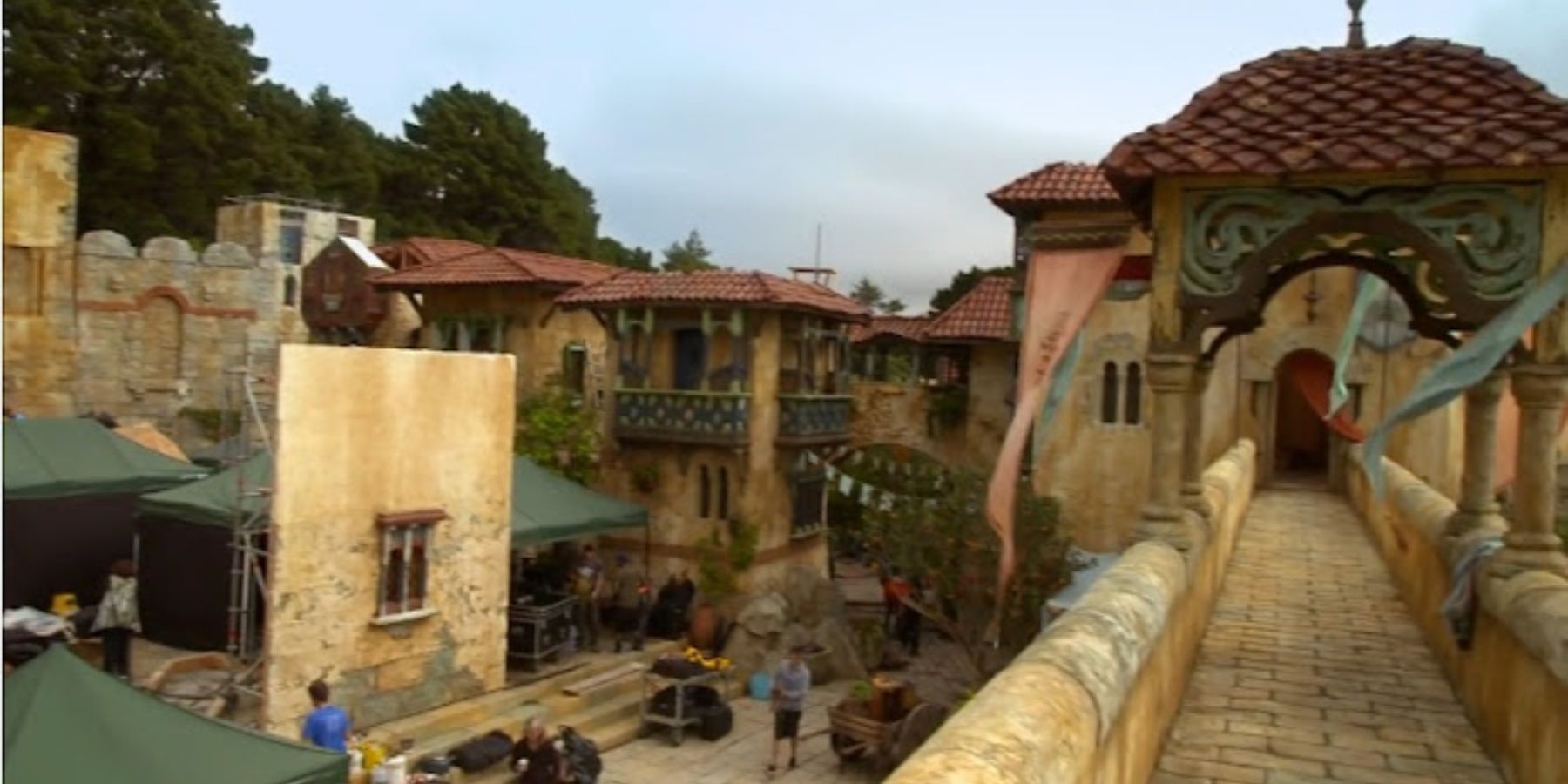For a seemingly small feature of The Hobbit trilogy, the city of Dale is one of the most beautiful and complex sets that were built for the movies, both before and after its destruction. The time during which this amazing place is actually onscreen makes up less than half an hour spread across the three films. Yet, it is essential to the storyline. The scene that depicts the desecration of Dale left a resounding impact upon both the design team and the whole of the crew working on the films, and the actors too.
This once-prosperous place is seen to be very vivid and vibrant in the flashbacks and memories of all who got to experience it in the days before the dragon came (like Thorin). It is known across the whole of Middle Earth to have been one of the most affluent and highly sought after places in all of the many kingdoms. This is because of its close connections to both Esgaroth, who brought fish and other luxuries from the sea; and the home of the dwarves, Erebor, whose wealth spilled out into the lands around it, trading in precious gems, rare stones and outstanding metal and wood crafts. But this only serves to make the destruction of the city all the more tragic.
A Masterpiece Of Set Building
The creation of the set was on a similar scale to that of Minas Tirith in the Lord of the Rings. It was one of the largest and most detailed sets created across all six films, and had so many hidden details that it would be impossible to spot them all during the fleeting time that Dale is in the movies, including all the extended edition scenes.
From backstreets full of candle makers and cloth sellers and bakers to the famed toy market that exists in the heart of the city, no effort was spared in making the whole place seem like a charming, beautiful and richly diverse utopia. One of the largest themes throughout the Mediterranean-inspired picturesque houses is that of plants, growing in abundance. There are trees in every courtyard, vines growing up the side of buildings, flowers and vegetables and herbs in every garden and window sill and nook and cranny. This look was not achieved lightly, as the set was built at the start of the New Zealand summer, and sourcing flourishing plants at this time of year was highly difficult for the horticultural team behind the films. But it was essential to get this right.
There were real trees everywhere with fake fruits attached that had been sculpted and painted, as well as fake plants that had real fruits embedded within, like bright red strawberries and juicy blackberries, to give every scene a pop of color. And the main feature, right in the center of dale, is a children’s roundabout, with leaping animals that spin around to pleasant music, the kind that many would recognize from their own childhood. The toy market itself is laced with wooden masterpieces like puzzles and dolls, shields, and of course, there are the famous kites that are seen right before Smaug arrives.
The cast and crew all fell in love with this amazing set upon its completion, saying that it was exactly the kind of idyllic village that they would like to bring their children to on holiday. It then became harrowing when they had to watch it be destroyed.
The Horrific Destruction
To film the scene of the city's destruction, the lovely set was completely desecrated, laid waste to as if it had really been ravaged by the dragon. Windows were removed from their panes and set alight, then replaced in the charred wreckage of burning buildings; the beautiful paint on the buildings was coated in thick gray ash. The cobbled streets were filled with crisp, unrecognizable figures, twisted bodies that had been caught in Smaug’s terrible flames, and the roundabout in the center of the town became a haunting reminder of the joy that had once existed there. Set builders warped the metal of the children's ride into jagged, terrifying angles, as it was melted by the fire, and gave the once-inviting animals a deranged, scorched look, highly symbolic of the innocence that was ruined that day. When those who had created the original set saw it again, it had completely changed.
The desecration of Dale thus became one of the most harrowing scenes for both the crew and the actors to film. When they were finally allowed back into the set after it had been transformed into its post-Smaug version, each person actually felt the grief of the place as if they had lost something personal, because they all had the memories of the beauty and the homeliness that they had felt on the set just weeks before.
Cast and crew alike report that it was hard to film scenes here, because there were lots of high emotions and reflections taking place for those involved. Of course, this only served to make the scene in which Dale is destroyed all the more poignant. The sadness and grief that is expressed by the characters is, in many ways, more real.






